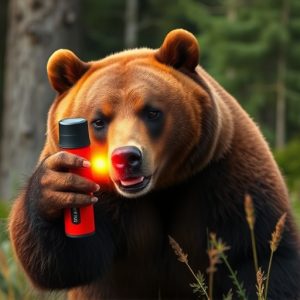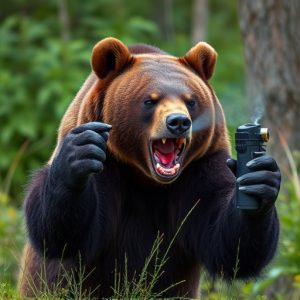Alaska Bear Spray: Fog Pattern, Regulations & Safe Usage Guide
In Alaska, bear spray is a crucial personal defense device for outdoor safety, regulated by the Depa…….
In Alaska, bear spray is a crucial personal defense device for outdoor safety, regulated by the Department of Fish and Game. It uses a fog pattern to envelop bears in a cloud of capsicum oil, deterring attacks up to 30 feet away. Despite being often misunderstood as non-lethal, it's not restricted like firearms or knives but classified as less-lethal for temporary incapacitation. Responsible usage involves understanding application techniques, secure storage, and following local regulations, ensuring safety without endangering humans or wildlife, especially in areas with frequent bear activity.
“In Alaska, where encounters with bears are a reality for many outdoor enthusiasts, understanding bear spray regulations is crucial. This guide delves into the intricacies of Alaska’s bear spray laws, focusing on the fog pattern and its effectiveness in deterring bears. We explore safe usage and storage practices to ensure your bear spray remains a reliable tool. Despite its non-lethal nature, clarifications around whether bear spray is considered a restricted weapon are addressed, empowering Alaskans and visitors alike to make informed decisions for their safety.”
- Understanding Bear Spray Regulations in Alaska
- The Fog Pattern and Its Effectiveness
- Safe Usage and Storage Practices
Understanding Bear Spray Regulations in Alaska
In Alaska, bear spray is a crucial tool for outdoor enthusiasts and residents navigating the state’s diverse landscapes. However, it’s important to understand that bear spray is not considered a restricted weapon but rather a personal defense device. The Alaska Department of Fish and Game regulates the use, possession, and transportation of bear spray to ensure safety and conservation efforts. These regulations cover aspects such as the type of spray allowed (typically oleoresin capsicum-based), permitted quantities, and storage requirements.
Understanding these rules is vital for responsible usage. Bear spray should be stored properly and kept out of reach of children and pets. Additionally, users must familiarize themselves with the recommended application techniques and distances to ensure effectiveness in an encounter situation. Compliance with local regulations not only keeps individuals safe but also helps preserve Alaska’s rich biodiversity.
The Fog Pattern and Its Effectiveness
The fog pattern is a unique feature of bear spray designed to maximize its effectiveness in unpredictable wildlife encounters. Unlike direct sprays, which can be blown away by wind or miss their target, the fog creates a dense cloud of pepper spray that lingers in the air and envelops bears. This pattern allows for a broader area of coverage, increasing the chances of deterring an attacking bear. The fine mist of capsicum oil in the fog pattern can reach distances up to 30 feet, making it a versatile tool for both hikers and outdoor enthusiasts in areas where bear encounters are common.
While often mistaken as a non-lethal weapon, bear spray is not restricted like traditional firearms or knives. It’s classified as a less-lethal instrument designed to disable temporarily rather than cause permanent harm. The fog pattern further enhances its safety profile by reducing the risk of direct contact with the spray, minimizing the chance of accidental injury. This makes it an ideal choice for individuals navigating bear country, ensuring they have a means of self-defense without endangering themselves or the wildlife.
Safe Usage and Storage Practices
Bear spray, also known as bear defense spray, is a popular tool for outdoor enthusiasts navigating Alaska’s wilderness. While it can be an effective deterrent against bears, safe usage and storage practices are paramount to ensure its reliability in emergency situations. It’s crucial to understand that bear spray is not a restricted weapon; however, its use comes with significant responsibility. Always follow the manufacturer’s instructions regarding proper application techniques, including ensuring a clear target and keeping your body between the spray and the bear.
Storage is another critical aspect. Bear spray should be kept in an easily accessible yet secure location, out of reach of children and pets. Extreme temperatures can affect its performance, so it’s best stored in a cool, dry place. Additionally, regularly check expiration dates as bear spray has a limited shelf life. Proper handling and storage will ensure that this valuable resource remains effective when you need it most during encounters with Alaska’s wild bears.
In conclusion, understanding Alaska’s bear spray regulations and the fog pattern’s effectiveness is crucial for safe outdoor activities. While bear spray isn’t a restricted weapon, responsible usage and storage practices are essential. By following these guidelines, Alaskans and visitors can enhance their safety in bear country and minimize environmental impact. Remember, knowledge and preparation are key to navigating Alaska’s wild landscapes.


